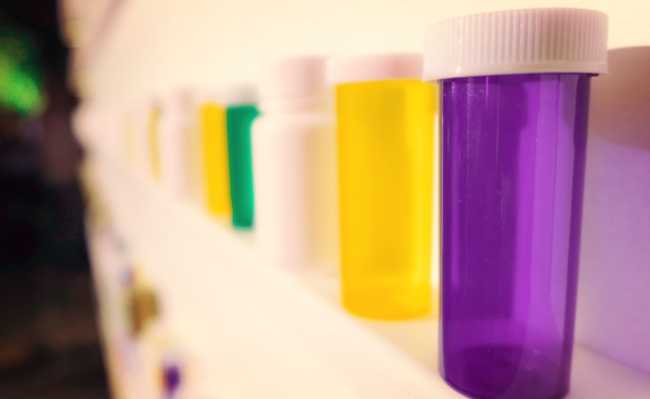Aerosol: what it is and its effects
Is it gaseous? Solid? Liquid? Understand more about the aerosol, its effects and consequences

Which is?
Contrary to what many people think, the aerosol, in its various formats, is not gaseous. They are solid or liquid particles that are suspended in a gaseous medium (usually air).
Some examples of liquid aerosols are particles that make up clouds, mists or deodorants and air fresheners. Among solids, we can mention smoke and dust, for example. Thus, it is possible to say that the aerosol can be of natural origin or produced from human activities.
Anthropogenic emissions, that is, resulting from human activities, of atmospheric aerosols have increased significantly over the last 150 years, causing several environmental impacts, which include adverse effects on human health, such as vision problems.
In the past, aerosols were not included in mathematical models that sought to predict climate, weather and air quality. The fact that their influences on the climate are considered nowadays demonstrates an increase in the complexity of climate change scenarios, in addition to the uncertainties involved in them.
The size of these particles is measured in micrometers (μm), and can vary from 0.001 to 100, where 1 μm is equivalent to 10 raised to –6 meters. Inhalable particles are those that have a diameter less than 10 μm, and are called MP10 (particulate matter 10).
Emission and Impacts
Inhalable particles (MP10) are easily carried into the respiratory system. Thus, they can cause or aggravate various respiratory diseases, especially for more sensitive groups, such as children and the elderly.
Once emitted into the atmosphere, these particles can spend days suspended before re-depositing on the Earth's surface, and can also be carried over long distances by air currents, causing impacts not only regional and local, but also global.
- Water cycle: what it is and how it occurs in nature
Aerosol particles can act by absorbing or scattering solar radiation, directly influencing the climate by acting in cloud formation, modifying hydrological cycles and the rainfall regime.
Sources
The main sources of particulate matter are the oceans (through sea salt released into the atmosphere by waves), deserts and volcanoes (through the lifting of dust through the winds and by sulfur dioxide - SO2 - emitted by volcanoes) and the burning of biomass and fossil fuels (by the emission of soot and smoke).
- What is biomass? Know advantages and disadvantages
- Soot: meet black carbon
Within what we call aerosols there are also those of biological origin, called bioaerosols, which include viruses, bacteria, fungi, spores, and pollens.
Primary and secondary aerosol
Aerosols can be further classified into primary and secondary. The primary aerosol is that formed by particles coming directly from the source, while the secondary aerosol is formed in the atmosphere. The latter is the result of chemical reactions involving volatile organic compounds (VOCs), in addition to sulfur dioxide (SO2) and nitrogen oxides (NOx).
Removal
The aerosol present in the atmosphere can return to the surface by wet or dry deposition:
wet deposition
It is the removal of aerosol from the atmosphere by precipitation. That is, it is when the rains carry these particles back to the Earth's surface.
dry deposition
It is when aerosol particles return to the Earth's surface without the need for rain, making it more difficult to happen.See below some images of the effect of smog photochemical (smog: junction of the words “smoke”, which in English means smoke and “fire”, which means fog) occurred in London in December 1952, when the reduction in visibility affected the entire city, leading to the cancellation of sporting events, in addition to having hampered transport and influenced the health of Londoners. This effect lasted four days, causing about 4,000 deaths above expectations. The photos below were taken around noon, believe it or not!
- What is air pollution? Know causes and types

Left: A London bus driver is required to walk in front of his vehicle to guide him through the smog.


A tugboat on the River Thames near the Tower Bridge in heavy smog.

Heavy air pollution at Piccadilly Circus, London

Fog on Victoria Street, Manchester. Photo: Tom Stuttard/Guardian

A group of city workers wearing heavy air pollution masks in London in November 1953. Almost a year after the Great Fog of 1952
So far, the atmospheric aerosol is not fully understood. There is still a lack of information related to the process of formation of these particles, their composition and final destination, in addition to the processes through which these particles go until their removal from the atmosphere. However, with several negative environmental effects (in addition to those negative to human health) already proven, the best thing to do is to avoid them. Instead of buying aerosol flavorings, make your own flavoring. In addition to avoiding particles that are harmful to health, you ensure that your house has purer air and is free from toxic substances. Another way to avoid them is the use of deodorants roll-on (preferably without parabens or other potentially harmful items) instead of those aerosols or in spray; or homemade deodorant. When the use of aerosol cans is unavoidable, stay tuned! They require special care both in their packaging and in relation to their disposal. Find out what special care is needed when disposing of aerosol cans and sprays).










